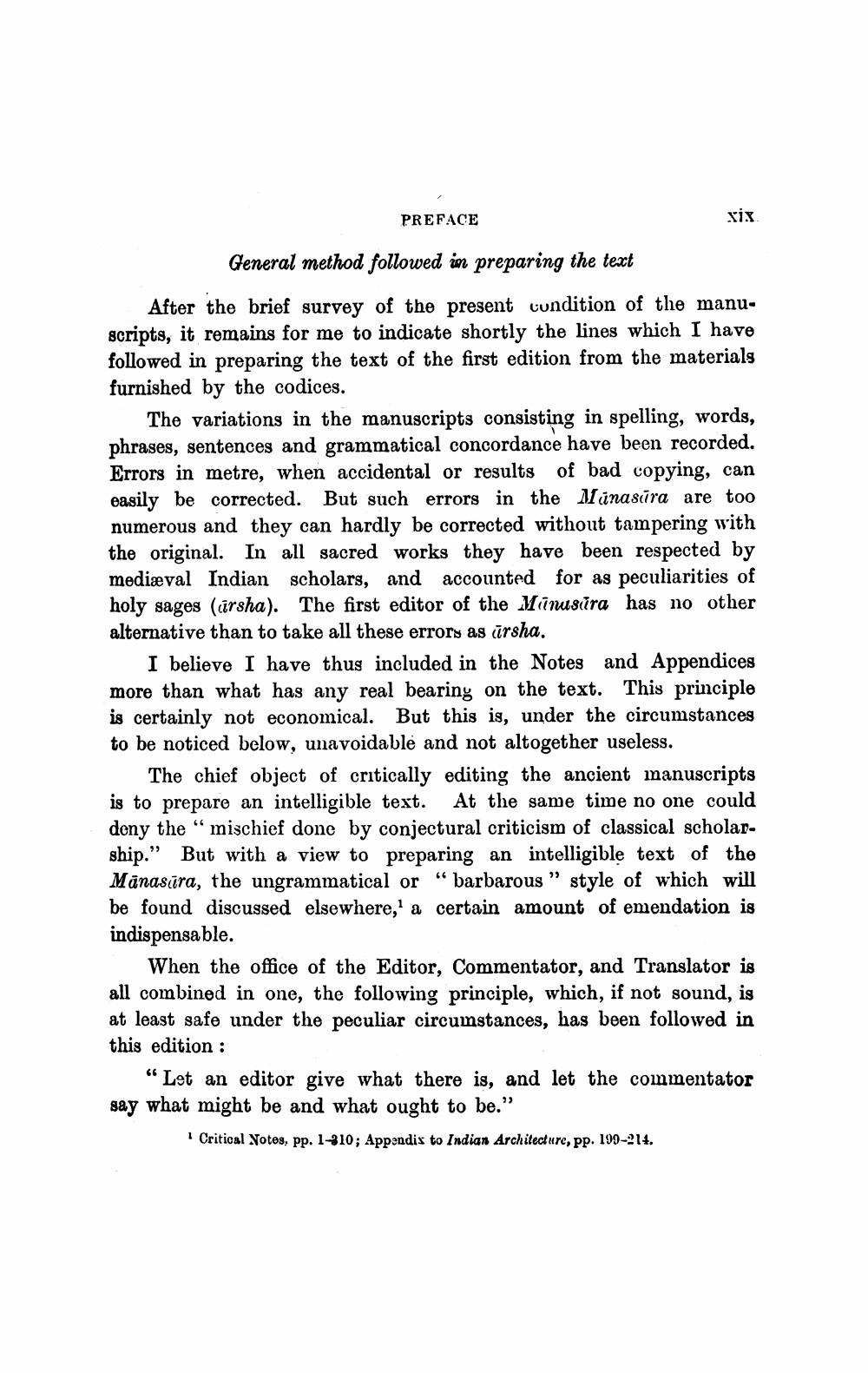________________
PREFACE
xix.
General method followed in preparing the text
After the brief survey of the present condition of the manuscripts, it remains for me to indicate shortly the lines which I have followed in preparing the text of the first edition from the materials furnished by the codices.
The variations in the manuscripts consisting in spelling, words, phrases, sentences and grammatical concordance have been recorded. Errors in metre, when accidental or results of bad copying, can easily be corrected. But such errors in the Manasara are too numerous and they can hardly be corrected without tampering with the original. In all sacred works they have been respected by medieval Indian scholars, and accounted for as peculiarities of holy sages (arsha). The first editor of the Manusura has no other alternative than to take all these errors as ursha.
I believe I have thus included in the Notes and Appendices more than what has any real bearing on the text. This principle is certainly not economical. But this is, under the circumstances to be noticed below, unavoidable and not altogether useless.
The chief object of critically editing the ancient manuscripts is to prepare an intelligible text. At the same time no one could deny the "mischief done by conjectural criticism of classical scholarship." But with a view to preparing an intelligible text of the Manasura, the ungrammatical or "barbarous " style of which will be found discussed elsewhere, a certain amount of emendation is indispensable.
When the office of the Editor, Commentator, and Translator is all combined in one, the following principle, which, if not sound, is at least safe under the peculiar circumstances, has been followed in this edition :
"Let an editor give what there is, and let the commentator say what might be and what ought to be."
1 Critical Notes, pp. 1-310; Appendix to Indian Architecture, pp. 199-214.




